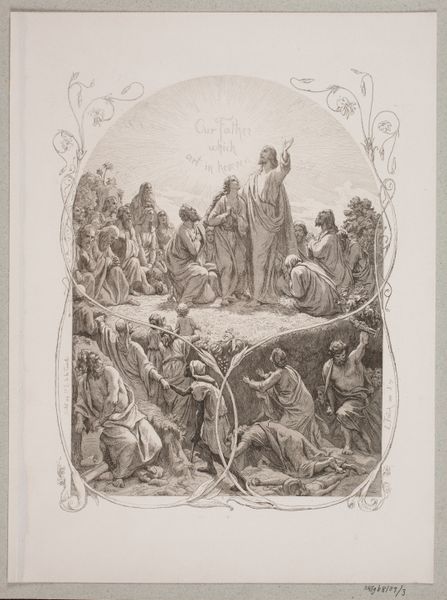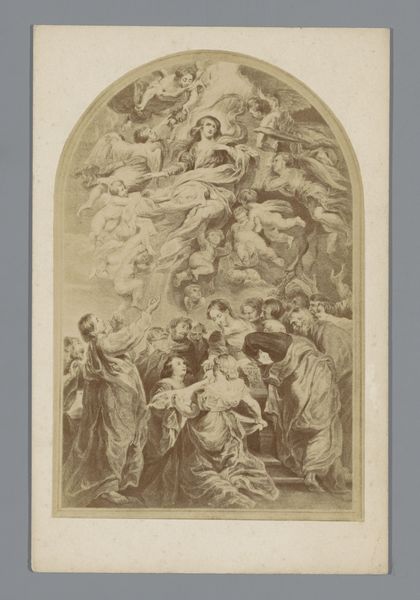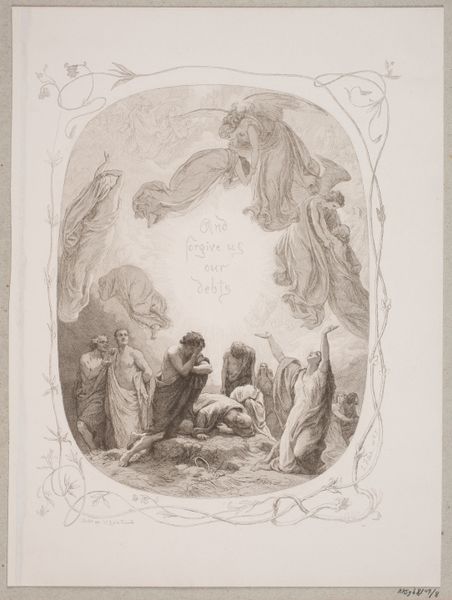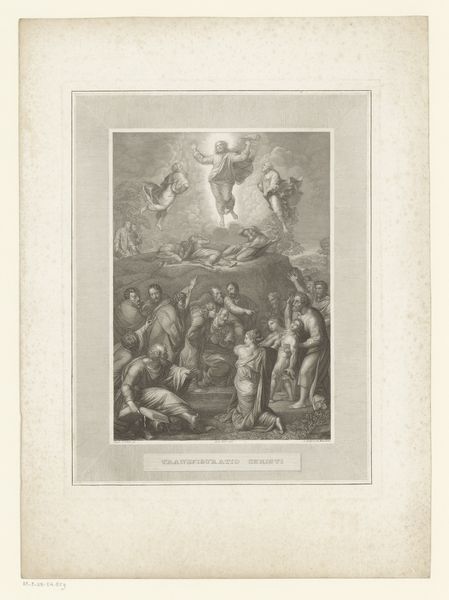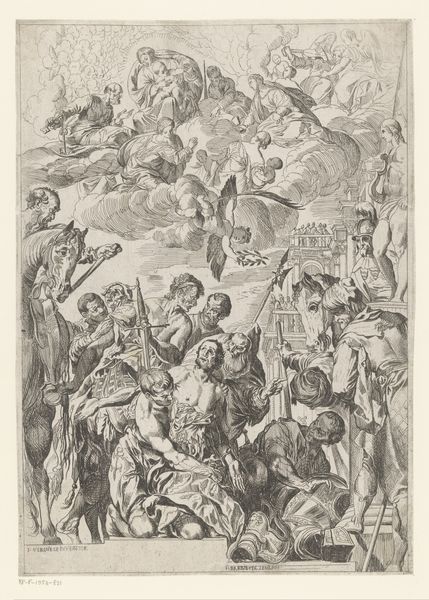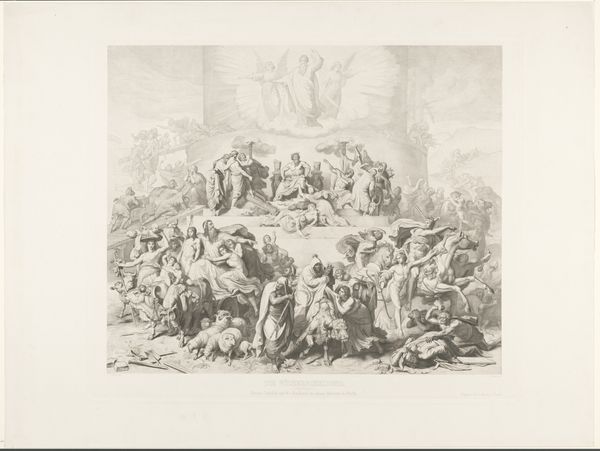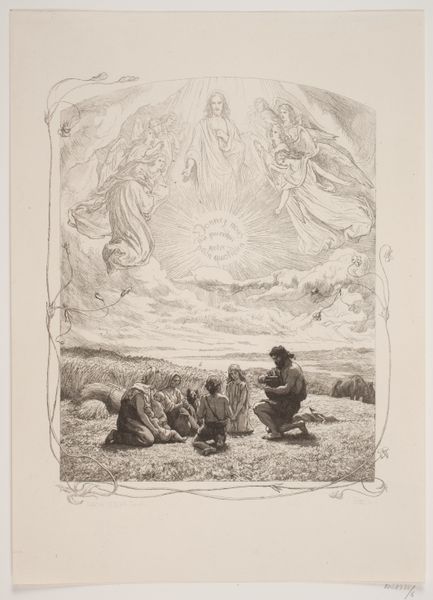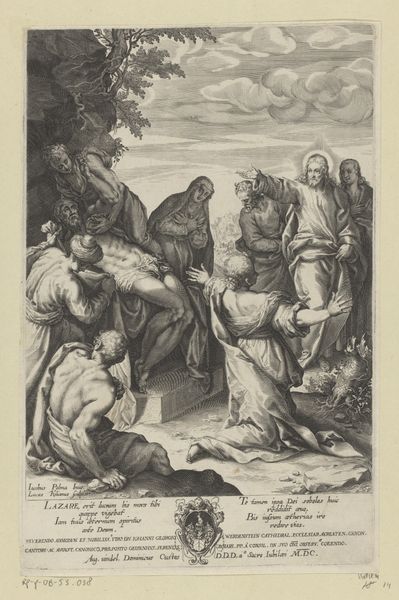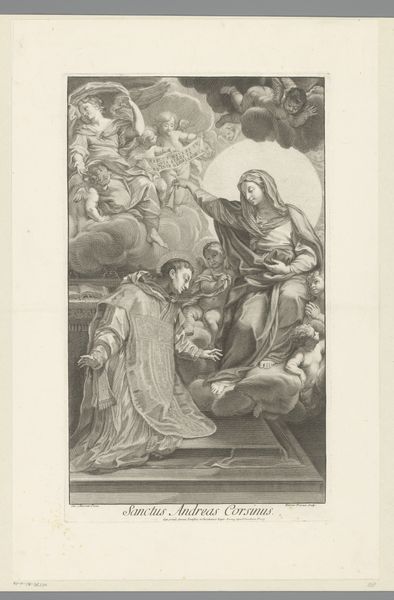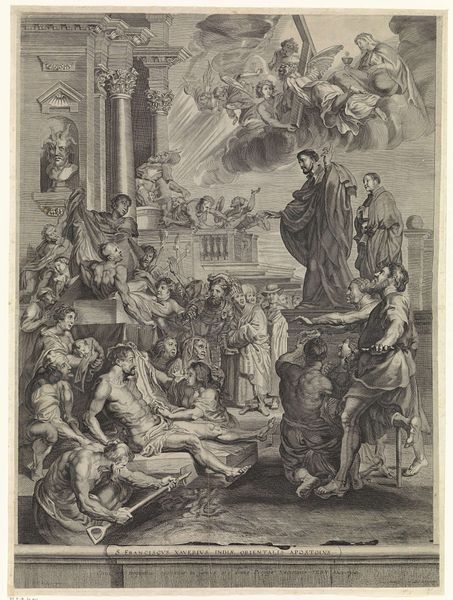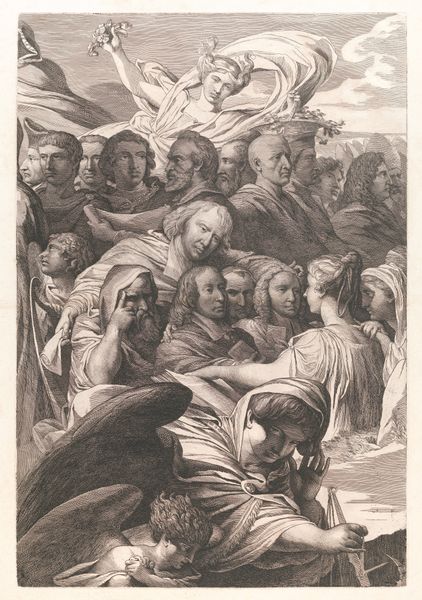
print, engraving
#
narrative-art
# print
#
group-portraits
#
history-painting
#
academic-art
#
engraving
Dimensions: 306 mm (height) x 220 mm (width) (bladmaal)
Curator: What a powerfully contrasting image. I’m immediately drawn to the stark division between light and dark, hope and despair. Editor: Indeed. Let me introduce this compelling engraving. It’s entitled "Illustration til 'L'Oraison Dominicale,'" created in 1863 by the Danish artist Lorenz Frølich. It's currently housed here at the SMK, the Statens Museum for Kunst. Curator: Frølich captures two distinct groups, unified through Christian symbolism. The figures above, bathed in celestial light, seem to be listening to a sermon, an experience perhaps associated with enlightenment. What French phrase is that above them, 'Notre Pere'? Editor: Precisely, yes, referring to the Lord's Prayer, it reads: “Notre Père qui êtes aux cieux." Interestingly, below we see what appears to be a different community or, perhaps, a projection of humanity, wrought with suffering, almost crushed under the weight of their lives. The light does not seem to touch this ground. Curator: Yes! That emotional spectrum strikes me too. Light becomes such an effective tool for delineating their moral states. And observe the active poses down below compared to those in meditative repose. Frølich stages something more profound here than just religious instruction. It's more primal. Editor: I find that connection between social upheaval and spiritual narrative to be interesting in light of Denmark's national self-image at the time. After losing territories to the German confederation in 1864, historical and biblical depictions increased across popular visual media. Curator: Do you suggest these visual oppositions served to highlight an inner struggle playing out within the body politic, reflected in its media output? Perhaps the engraving offers, or prescribes, pious behavior as an ideal against societal turmoil. Editor: One could infer that from Frölich's emphasis. Engravings had a wide reach across class and education, so this type of stark visual contrast had the potential to impact social consciousness. Curator: So, beyond the image itself, the way this print functioned culturally becomes particularly poignant. Looking at this work now has altered my appreciation for visual symbols and how they intersect the public sphere. Editor: It underscores the continuing power art possesses in mirroring the collective mood and possibly helping guide the future, doesn't it? Thank you for that enlightening exchange.
Comments
No comments
Be the first to comment and join the conversation on the ultimate creative platform.
